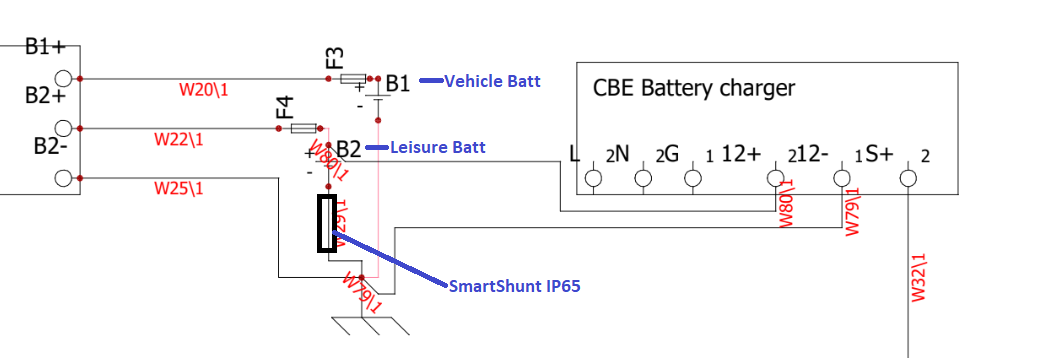Hello to the forum community!
I am new here as since yesterday I am also a new SmartShunt IP65 user.
I refering to the audience with an IP65 related problem and would be grateful for any help/comment.
I let IP65 install in my CamperVan to gain the needed control over the leasure battery. The installation went smooth, the aplication start-up also, everything looked as exepected when examining the battery being charged by solar pannel and/or by connection to aux power line and with differnt loads activated. However much to my surprise during the drive home a problem emerged: I noticed that the application is presenting that with the vehicle engine active the leasure battery is discharging instead of charging!
The installer/dealear was surprised to learn that too and now we joined efforts to investigate and solve the problem. I would say that is must be something related to the chassis wiring but I'm not sure what could it be. The battery negative is simply wired to the appropriate side of the SmartShunt. Could anyone please help, may be with a hint of what could be wrong if not with a complete solution to the problem?
I am positive, that he in reality the alternator does charge the leasure battery. In three years of owing the CamperVan that could hardly remain unnoteced.
Kind regards,



